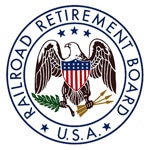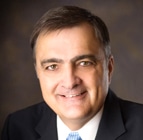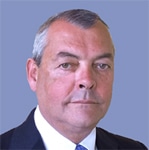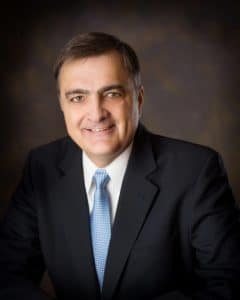If you’re attending the SMART TD Chicago Regional Meeting (July 25 – 27) you’ll want to reserve your room at the Sheraton Grand Chicago before the June 30th deadline – to get the member discount: $169 + tax/night. Click here for more information.
Author: amyr
Federal investigators are placing the blame squarely on Union Pacific Railroad for their lack of track maintenance that caused the June 3rd fiery derailment that resulted in a mass evacuation as 42,000 gallons of crude oil spilled into the small town of Mosier, Oregon. Read the complete story here. Photo courtesy of Silas Bleakley, KOIN 6 News.

Fairmont San Francisco sold out, overflow rate expires June 17
The Fairmont San Francisco hotel has sold out. Not to worry, the overflow hotel – Mark Hopkins Intercontinental Hotel – still has rooms available. The Mark Hopkins is conveniently located across the street from the Fairmont San Francisco and is offering members the same great rate of $169 per night (plus tax). Those planning on attending the San Francisco meeting should make their reservations now. The reservation deadline for the negotiated rate of $169 per night (plus tax) is tomorrow, Friday, June 17.
Click here to register online or call 1-800-662-4455. Don’t forget to mention the reservation code, “SMART UNION ANNUAL WESTERN REGIONAL MEETING” to receive the discounted rate.
San Francisco registration discount expires June 19
Members who have not yet registered through SMART TD for the meetings should also do so as soon as possible. The deadline for the $150 per person rate is Sunday, June 19. Registrations taken after this date will be charged the full price of $200 per registration. Members have until July 3 to register for the Chicago regional meeting at the discounted rate.
Click here to register for the San Francisco Regional Meeting online or call SMART TD headquarters at 216-228-9400.
SMART TD Night Out at the Ballpark
All SMART members, officers and family members that are registered for the San Francisco Regional Meeting will enjoy a “SMART Night Out at the Ballpark” on Tuesday, July 5, where the San Francisco Giants will take on the Colorado Rockies at AT&T Park. The game starts at 7 p.m. Transportation, game ticket and a $25 food and beverage voucher printed on your game ticket will be provided to each registered guest upon check-in at the SMART TD registration desk located in the Venetian Room on the Lobby Level of the Fairmont San Francisco Hotel.
Members who wish to purchase extra tickets for non-registered guests may do so by visiting the SMART TD registration desk located in the Venetian room on the Lobby Level of the Fairmont, starting Sunday, July 3. Extra tickets are $45 and include transportation, game ticket and $25 food and beverage voucher. Extra tickets are expected to sell out quickly. We hope you can join us for a fun night of baseball and fellowship.
SMART Transportation Division President John Previsich and Brotherhood of Locomotive Engineers and Trainmen (BLET) President Dennis Pierce, issued a joint statement, following their submission of their comments to the Federal Railroad Administration (FRA) on train crew size.
“Operating freight trains with one-person train crews is unsafe and must be prohibited. That is the message we delivered yesterday in the comments filed with federal rail safety regulators,” Previsich and Pierce said.
“Our comments provide a clear rationale for the FRA to finalize a rule this year and to close loopholes included in the agency’s initial proposed rule that could permit the limited use of one-person crew freight operations.”
Click here to read the official press release from both unions.
Click here to read the comments submitted to the FRA, followed by the polling results of 11 individual states on two-person crews conducted by DFM Research on behalf of SMART TD (see page 18 for polling results).
On Wednesday, June 15, SMART Transportation Division and the Brotherhood of Locomotive Engineers and Trainmen (BLET) submitted their joint comments on the Federal Railroad Administration’s (FRA) proposed two-person crew rule.
While both unions strongly support the proposed rule, they suggested in their comments that the rule be made stronger before being made final.
“We firmly believe that the only safe way to operate a train is with a crew of at least two people – a federally certified locomotive engineer and a federally certified conductor,” the unions emphasized.
Click here to read the unions’ comments. Following the comments (on page 18) are the polling results of 11 individual states on two-person crews conducted by DFM Research on behalf of SMART TD.
Members, family, friends and communities can comment on the proposed rule until tonight at 11:59 p.m. eastern time and are encouraged to do so. Click here to comment.

The RRB will mail the forms to employees during the first half of June. While every effort has been made to maintain current addresses for all active railroad employees, anyone with compensation reported in 2015 who has not received Form BA-6 by July 1, or needs a replacement, should contact the nearest RRB field office by calling the agency’s toll-free number, 1-877-772-5772.
Form BA-6 provides employees with a record of their railroad retirement service and compensation, and the information shown is used to determine whether an employee qualifies for benefits and the amount of those benefits. It is important that employees review their Form BA-6 to see whether their own records of service months and creditable compensation agree with the figures shown on the form.
In checking the 2015 compensation total, employees should be aware that only annual earnings up to $118,500 were creditable for railroad retirement purposes in that year, and that $118,500 is the maximum amount shown on the form. To assist employees in reviewing their service credits, the form also shows service credited on a month-by-month basis for 2014, 2013, and 2012, when the creditable compensation maximum was $117,000 for 2014, $113,700 for 2013 and $110,100 for 2012. The form also identifies the employer(s) reporting the employee’s 2015 service and compensation.
Besides the months of service reported by employers, Form BA-6 shows the number of any additional service months deemed by the RRB. Deemed service months may be credited under certain conditions for an employee who did not work in all 12 months of the year, but had creditable tier II earnings exceeding monthly prorations of the creditable tier II earnings maximum for the year. However, the total of reported and deemed service months may never exceed 12 in a calendar year, and no service months, reported or deemed, can be credited after retirement, severance, resignation, discharge or death.
Form BA-6 shows the number of months of verified military service creditable as service under the Railroad Retirement Act, if the service was previously reported to the RRB. Employees are encouraged to submit proofs of age and/or military service in advance of their actual retirement.
Filing these proofs with the RRB in advance will streamline the benefit application process and prevent payment delays.
For employees who received separation or severance payments, the section of the form designated “Taxable Amount” shows the amounts reported by employers of any separation allowance or severance payments that were subject to railroad retirement tier II taxes. This information is shown on the form because a lump sum, approximating part or all of the tier II taxes deducted from such payments made after 1984 which did not provide additional tier II credits, may be payable by the RRB upon retirement to qualified employees or to survivors if the employee dies before retirement. The amount of an allowance included in an employee’s regular compensation is shown under “Compensation Amount.”
Form BA-6 also shows, in the section designated “Employee Contributions,” the cumulative amount of tier II railroad retirement payroll taxes paid by the employee over and above tier I social security equivalent payroll taxes. While the RRB does not collect or maintain payroll tax information, the agency computes this amount from its compensation records in order to advise retired employees of their payroll tax contributions for Federal income tax purposes.
Employees should check their name, address, birth date and sex shown at the top of the form. If the form shows the birth date as 99-9999 and the gender code is “U” (for unknown), it means the RRB is verifying his or her social security number with the Social Security Administration. Otherwise, if the personal identifying information is incorrect or incomplete (generally a case where the employee’s surname has more than 10 letters and the form shows only the first 10 letters) or the address is not correct, the employee should contact an RRB field office. The field office can then correct the RRB’s records. This is important in order to prevent identity or security-related problems that could arise if the employee wants to use certain internet services available on the RRB’s website at www.rrb.gov.
Employees may view their railroad retirement service and compensation records; get annuity estimates; apply for or claim railroad unemployment benefits; claim sickness benefits; and access their railroad unemployment insurance account statements through the RRB’s website.
To use these online services, an employee must set up an RRB Internet Services account. Instructions for establishing an online account can be found in the “Benefit Online Services Login” section on the home page. For security purposes, first-time users must enter a Password Request Code (PRC). The agency mails a PRC to any employee who files a paper application for unemployment or sickness benefits. If an individual has not received a PRC, they can request one by clicking the appropriate box on the home page. They will then receive the PRC by mail at their home address in about 10 days.
Employees can also request that printouts of their individual railroad retirement records of service months and compensation be mailed to them. A PIN/Password is not required to use this service. It can be accessed by visiting www.rrb.gov, moving the cursor over the “Beneficiaries & RR Employees” category and then clicking on “Request Service & Compensation History.”
If the employee’s name was incomplete on Form BA-6, and he or she has not yet contacted an RRB field office to correct it, the employee should enter his or her first and middle initials and his or her surname just as it appears on the Form BA-6 or a previously furnished printout of service and compensation, along with the other requested information, in order to submit an online request.
Any other discrepancies in Form BA-6 should be reported promptly in writing to:
Protest Unit – CESC
Railroad Retirement Board
844 North Rush Street
Chicago, Illinois 60611-1275
The employee must include his or her social security number in the letter. Form BA-6 also explains what other documentation and information should be provided. The law limits to four years the period during which corrections to service and compensation amounts can be made.
For most employees, the address of the RRB office serving their area is provided on the form along with the RRB’s nationwide toll-free number (1-877-772-5772). RRB field offices are open to the public from 9:00 a.m. to 3:30 p.m. on Monday, Tuesday, Thursday and Friday, and from 9:00 a.m. to noon on Wednesday (beginning June 1, 2016), except on Federal holidays.
Read the complete article here.






